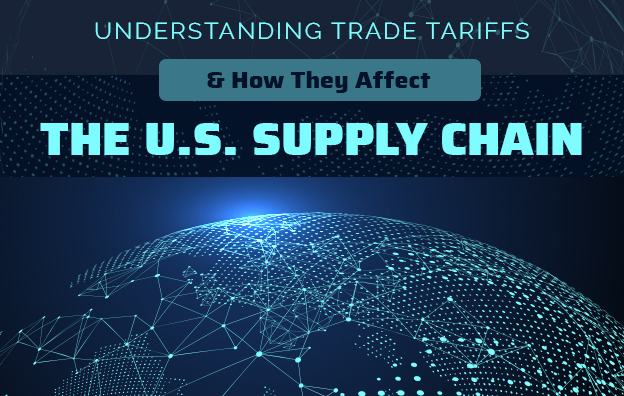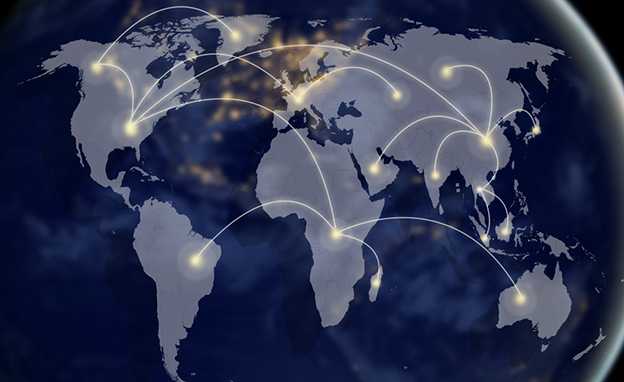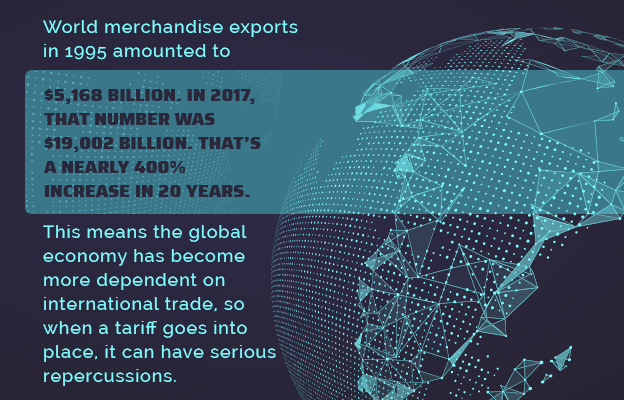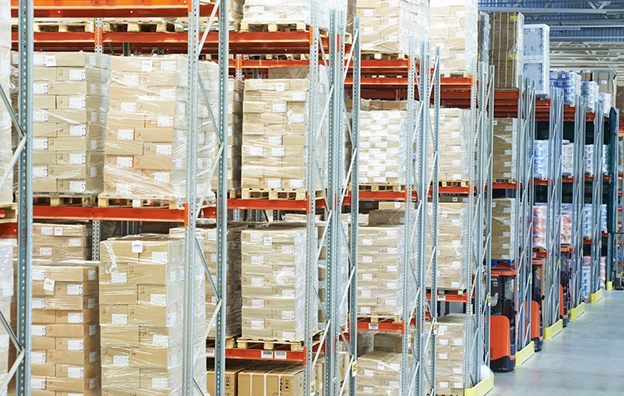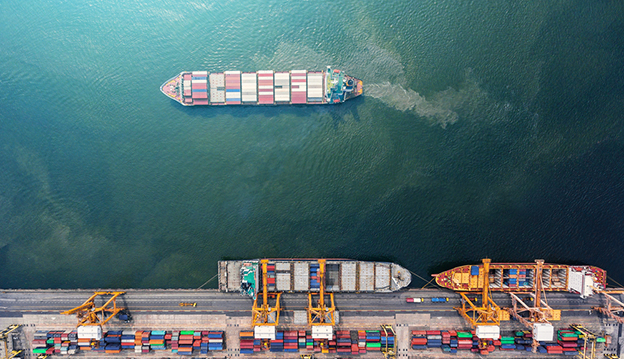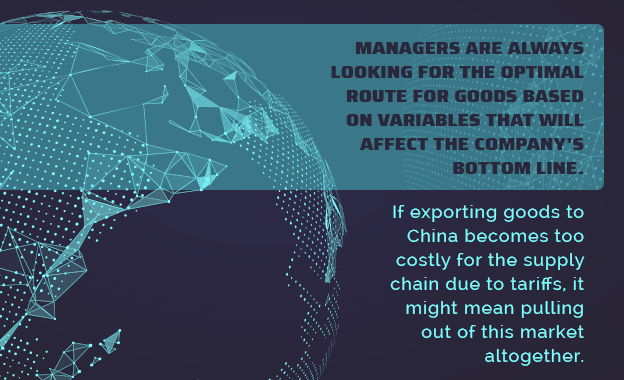The U.S. supply chain is made up of thousands of interconnected components that allow goods and packages to move all over the world. This web of trucks, planes, warehouses, railways and cargo ships keeps the economy alive, allowing businesses from the U.S. to import and export goods from other countries. With a global economy, trade tariffs, or taxes imposed on goods being imported from other countries, can have a powerful effect on the U.S. supply chain. If the price to import international goods increases, shipping companies may have to adjust their shipping routes or close off access to some markets altogether. U.S.-based companies may stop doing business overseas, halting demand for international shipping services and fundamentally altering the make-up of the supply chain. Take a deep dive into how imposing trade tariffs can affect the U.S. supply chain.
WHAT ARE TRADE TARIFFS?
Like all countries, the U.S. trades with other countries from all over the world. A trade tariff is a tax placed on goods being imported from a certain country. If a U.S.-based company wants to import goods from this country, they will have to pay a higher price, which will affect their bottom line and may even drive them out of business.
A country like the U.S. may decide to impose trade tariffs as a way of punishing or forcing another country to come to the negotiating table. Countries depend on international trade as a means of stimulating the domestic economy. Without international trade, these countries would have to depend on domestic products, severely stifling all economic activity. Depending on whether this country imports goods from the U.S., it can retaliate by enforcing its own trade tariffs on U.S. goods, so U.S. companies can no longer do business there.
RISING INTERNATIONAL TRADE
In generations past, trade tariffs did not hold the same sway as they do today. That’s because international trade has skyrocketed in the past several decades. World merchandise exports in 1995 amounted to $5,168 billion. In 2017, that number was up to $19,002 billion. That’s a nearly 400 percent increase in 20 years. This means the global economy has become more dependent on international trade, so when a tariff goes into place, it can have serious repercussions.
In 2016, exported goods accounted for 11.89 percent of the U.S.’s total gross domestic product (GDP). If the U.S. imposes a trade tariff on a country that imports a lot of U.S. goods, it could see a major dip in its GDP as the other country imposes trade tariffs of its own. With so much dependence on international trade, trade tariffs can dramatically affect the health of the U.S. economy.
HOW THE U.S. SUPPLY CHAIN FITS INTO THE GLOBAL SUPPLY CHAIN
It’s impossible to discuss the U.S. supply chain without examining its relationship with the global supply chain. With rising international trade, the U.S. supply chain has become just one hub of transportation among many. The U.S. supply chain must cooperate with supply chains in other countries, so packages and goods can move across international boundaries with ease.
Those who manage the U.S. supply chain must keep their eyes on the U.S.’s trading practices, so they can respond accordingly if these relationships change. The supply chain is made up of dozens of different factors that are always in flux, including the item’s location, destination, fuel cost, weather, international relations, security practices and trade policies. If one of these variables changes, supply chain companies need to respond immediately by relocating or rerouting the shipment, so their company doesn’t lose money if a route becomes economically unviable.
HOW TRADE TARIFFS AFFECT THE U.S. SUPPLY CHAIN
When a trade tariff goes into effect and an extra tax is placed on goods imported from another country, the companies that import these goods may no longer choose to do so, thus the supply chain company may lose business or it may need to refocus its efforts to complete a new route. As the foreign country imposes its own trade tariffs on U.S. exports, companies in the U.S. may lose access to this part of the market, which means additional supply chain companies will lose part of their business. Some companies may also find another route for these goods by exporting them to a different country that has no trade tariffs in place. Again, the supply chain will need to respond by creating a new route.
As exports are reduced, trade tariffs slow down U.S. economic activity, which means they limit demand for the supply chain altogether. The supply chain keeps the U.S. economy going, making sure shipping containers and goods reach consumers and businesses to facilitate economic activity. If the U.S. economy slows down, the supply chain will react in turn by scaling back its operations because there will be less goods and packages to deliver, which affects the bottom line of shipping and supply chain companies across the U.S.
THE RIPPLE EFFECTS OF TRADE TARIFFS
Trade tariffs can have all sorts of ripple effects, creating some winners and mostly losers on all sides. For example, if the U.S. imposes trade tariffs on China, Chinese companies may no longer do business with the U.S. as well as U.S.-based supply chain companies that would normally deliver these products to U.S. consumers. If China imposes trade tariffs on U.S. goods, U.S.-based companies that sell goods to China may go out of business. As a result, theses companies would no longer have any need for the supply chain and the industry would lose some of its clients.
Some U.S.-based companies may find that it makes more financial sense to sell their products in the U.S. instead of facing stiff tariffs overseas. This may flood the domestic market for these products, but the supply chain will need to invest new resources to meet changing demand. The company may start working with a domestic shipping company, while abandoning the international shipping company it once used to export goods to China.
A U.S.-based company that used to import goods from China may find that it’s cheaper to import these same goods from another country or a U.S.-based company instead. The supply chain company will need to find a new route for these goods depending how their clients alter their business model.
CREATING A MODEL OF THE SUPPLY CHAIN
Trade tariffs can affect every aspect of the supply chain, from the number of trucks needed to complete a delivery to the amount of air cargo flying across international borders. With so many changes to supply and demand across the market, supply chain managers need to be able to adapt quickly in order to keep up.

That’s why the industry has started using complex digital models of the supply chain to better respond to changing demand. Once every truck, warehouse, package and plane have been added to a supply chain management software program, those who control the supply chain can quickly make adjustments by rerouting a shipment, requesting additional transportation or scaling back operations when demand is slow. Just as the supply chain is made up of so many different variables, these models show managers how all these moving parts connect. If a truck breaks down on the side of the road, managers can see the ripple effects of this delay playing out across the entire model.
If some crucial change takes place in the supply chain, this digital model allows managers to respond to changing demand in real-time. As trade tariffs alter demand within the supply chain, managers will need to depend on these tools to make the necessary adjustments based on what makes the most sense for their business and their clients.
BALANCING SERVICE AND COST
When creating a digital model of the supply chain, managers must consider every element that may impact the bottom line of their business. Variables such fuel cost, weather, trade tariffs and other transportation costs must be added to the digital model so managers can see how certain changes to the supply chain will affect their business. If a certain route becomes too expensive for the supply chain company, it will have to raise its prices or cut off all shipment routes to that market.
Supply chain managers will need to balance service and cost when examining the financial viability of different trade routes. When a trade tariff goes into effect, certain companies will need to decide if pursuing these markets is still in their financial interest. Managers are always looking for the optimal route for goods based on variables that will affect the company’s bottom line. If exporting goods to China becomes too costly for the supply chain due to tariffs, it might mean pulling out of this market altogether.
The economic viability of a certain trade route is based on more than just trade tariffs. While this might raise the price of imports and exports from a certain country, supply chain managers may realize that other economic variables such as fuel cost may shut them out of the market. Let’s say a company can only afford a 30 percent increase in transportation costs. With rising fuel prices and trade tariffs in effect, suddenly this part of the market becomes out of reach.
HOW TRADE TARIFFS GO INTO EFFECT
When discussing how trade tariffs affect the U.S. supply chain, it’s important to remember that trade tariffs do not go into effect overnight. Imposing trade tariffs and drafting legislation requires a great deal of preparation on the part of the U.S. president and their administration. The public is usually given advance notice of the government’s plans to enforce new tariffs, which gives companies and the supply chain plenty of time to formulate a response.
Unlike unexpected weather delays and sudden changes in the price of fuel, supply chain managers can start thinking about how new trade tariffs will affect their business as soon as the White House announces an intention to impose them. Before the tariffs go into effect, managers can plan for changes to the supply chain by finding out what products or shipping routes will be affected, exploring new trade routes and contacting clients who use the supply chain to see how it will affect their business.
To better prepare for changing demand brought on by the trade tariffs, supply chain managers will use a digital model of the supply chain to analyze how they can best use their shipping resources moving forward. When managers can quickly get an overview of the entire supply chain puzzle using digital models, they can easily see how these tariffs will affect the global movement of goods. This gives managers a good idea of what the global supply will look like when the trade tariffs are in effect.
By the time the trade tariffs are put in place and the two countries stop trading certain goods, supply chain managers will be prepared to deal with the consequences by making the most of new trading partnerships and shipment routes.
BOTTOM LINE
While these sophisticated digital models allow supply chain managers to better respond to changing global demand, there is only so much they can do when it comes to surviving the effects of a trade war. For many companies in the supply chain, these tariffs will mean less overall economic activity and less revenue for their business. Some of those tasked with managing the supply chain and moving shipments across the world may find themselves out of a job until these trade tariffs become void.
It may take the supply chain years to develop new trading partnerships as a way of rebounding from the adverse economic effects of these tariffs. Some companies may benefit from trade tariffs if they see a boost in demand in the domestic supply chain, but since the U.S. does so much business with other countries, most supply chain companies will take a hit. Digital models and big data can relieve some of these economic hardships, but it’s usually best to avoid trade disputes altogether.
